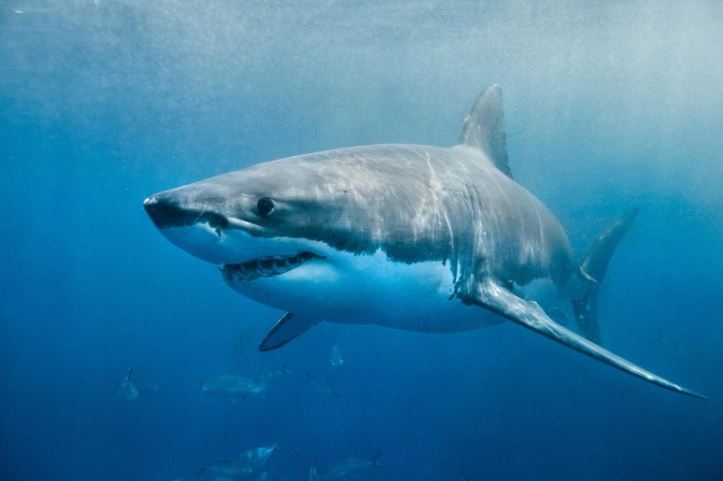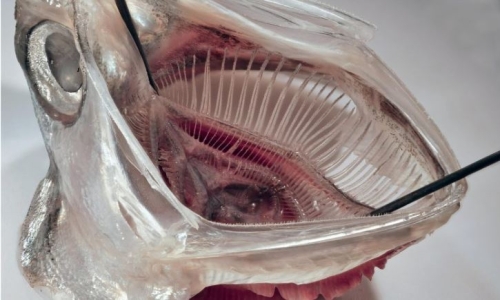


 10:24:33
10:24:33  2025-06-30
2025-06-30  1041
1041

A new study has confirmed that sharks follow established patterns when it comes to body size, and this finding could change how scientists understand biological trends throughout the animal kingdom.
For over a hundred years, scientists have used a theory that describes how an animal’s surface area and volume change with size.
Now, researchers from James Cook University (JCU) and the University of Massachusetts have confirmed this theory in sharks, using advanced 3D modeling to study one of the ocean’s most iconic predators.
“We found that sharks follow what’s known as the ‘two-thirds scaling law’ almost perfectly,” said Joel Gayford, JCU PhD candidate and lead author on the study.
“This law helps explain how animals exchange heat, energy, and oxygen with their environment – so confirming it in full-sized animals, not just cells, is a big deal.”
3D scans reveal precise body measurements
The team created detailed digital models of 54 shark species using high-resolution 3D scans developed in collaboration with computer graphics artist Johnson Martin.
These scans gave researchers precise measurements of surface area and volume, providing valuable insights into how body shape affects physiology.
“This ratio is fundamental,” said JCU Marine Biology Professor, Dr Jodie Rummer, a co-author on the study.
“It underpins how animals breathe, regulate temperature, and process waste. And now, for the first time, we’ve shown it holds true in animals as complex and diverse as sharks.”
Surface-to-volume ratios match predictions
To rigorously test the rule, the team used phylogenetic regression — a statistical method that considers evolutionary relationships — and found that shark surface area is proportional to volume raised to the power of 0.64. That’s just 3% off the theoretical prediction of 0.67.
“It’s remarkable,” said Prof Rummer. “This suggests sharks have evolved to stick to this ratio, possibly because deviating from it is too costly or constrained by early development.”
Evolutionary constraints on shark anatomy
Indeed, the team believes evolutionary and developmental constraints could explain why sharks from vastly different habitats and lifestyles still obey the same scaling rule.
“Changing the way tissue is distributed throughout the body might require major changes during early embryonic development – and that’s expensive, energetically speaking,” said Mr Gayford.
Importantly, these findings have real-world applications.
“Surface area-to-volume ratios are key inputs in equations used to model how animals respond to climate change, like how fast they regulate their body temperatures or how efficiently they use oxygen,” Mr Gayford said.
“Now, we can use those equations with much greater confidence in sharks and other large animals.”
The research highlights how modern imaging technology — and some very patient digital modeling — can answer age-old biological questions.
Reality Of Islam |
|

Researchers

A new chip-

A large inf

Choosing th
 9:3:43
9:3:43
 2018-11-05
2018-11-05
10 benefits of Marriage in Islam
 7:5:22
7:5:22
 2019-04-08
2019-04-08
benefits of reciting surat yunus, hud &
 9:45:7
9:45:7
 2018-12-24
2018-12-24
advantages & disadvantages of divorce
 11:35:12
11:35:12
 2018-06-10
2018-06-10
 6:0:51
6:0:51
 2018-10-16
2018-10-16
 2:33:4
2:33:4
 2023-02-15
2023-02-15
 2:13:43
2:13:43
 2022-05-27
2022-05-27
 1:34:8
1:34:8
 2022-02-01
2022-02-01
 4:26:43
4:26:43
 2022-02-21
2022-02-21
 2:11:12
2:11:12
 2022-10-15
2022-10-15
 9:50:37
9:50:37
 2023-02-28
2023-02-28
 4:25:57
4:25:57
 2023-02-11
2023-02-11
 5:41:46
5:41:46
 2023-03-18
2023-03-18
| LATEST |